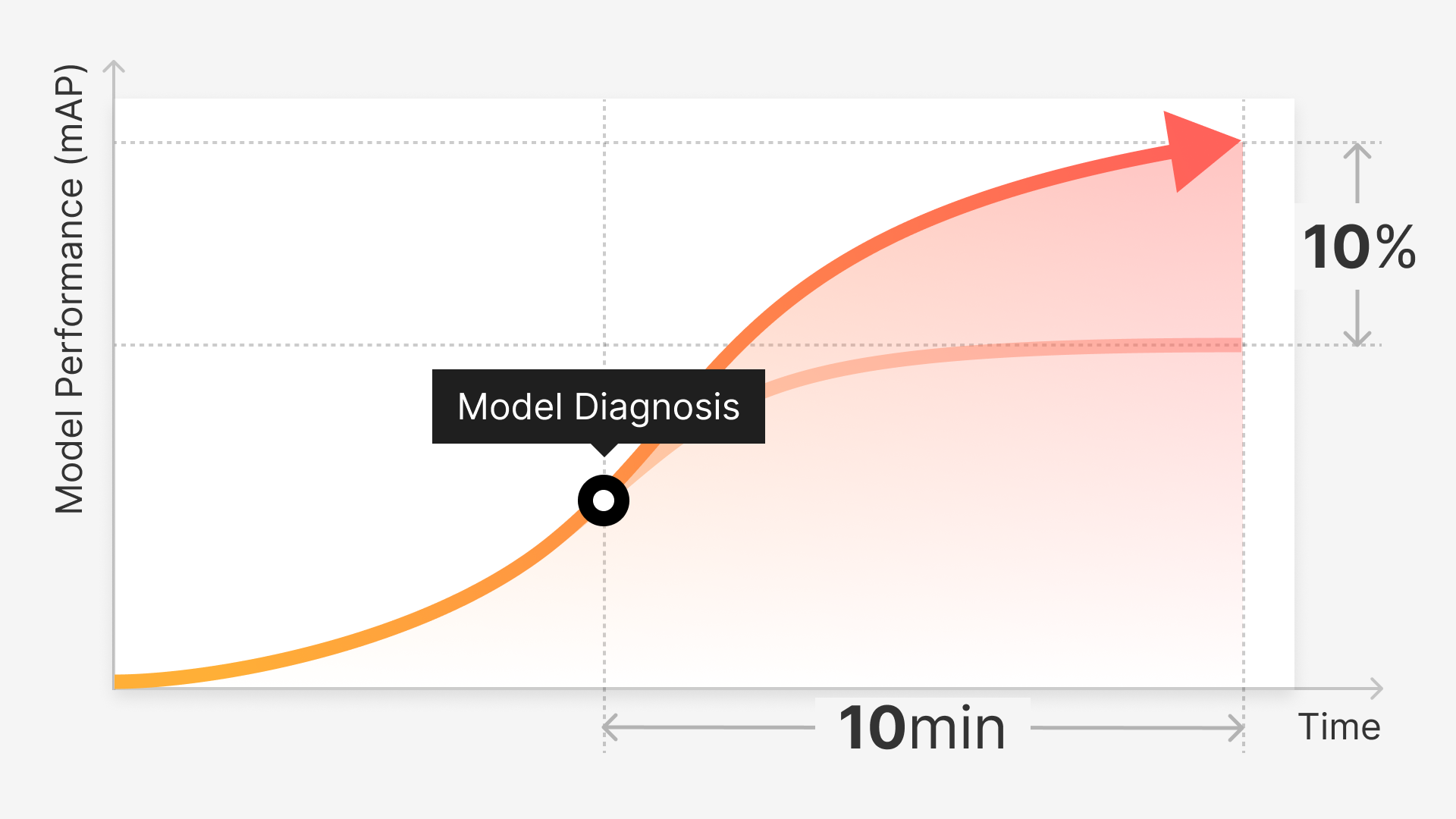With the considerable advancements and promise machine learning and computer vision have to offer, AI technologies have reached the highest heights of performance and competency yet. However, this efficiency level wouldn't be possible without improving and prioritizing data processing procedures.
Data, precisely quality and relevant data matched to its particular use case, is a necessity for any AI system or application to function as intended. It can be expected then that the methods to manage and refine data used to power those technologies enabled that impressive progression in development.
Over time, those methods have been updated and improved to meet the AI industry's evolving needs. As constraints and limitations of the technology are realized and addressed, those data preparation methods have naturally been adjusted to accommodate the more ambitious design and functionality goals.
In the same line of thinking, the most innovative approach to date, the undertaking of automating the entire data processing pipeline, is the necessary course data scientists are presently on to allow the field to progress past its current capabilities. Since the level of performance and capacity of any application is heavily reliant on the data that is fed into it.
Although automating data management is an obvious solution to alleviating and surpassing many of the pains associated with preparing data for model development, it has its host of challenges that require resolving to employ the technique effectively.
In this article, we'll present several common roadblocks that machine learning teams might face on their journey to adopting automated data processing practices and providing actionable solutions to those deterrents or barriers.
Challenge #1: Inaccurate Labeling
The efficient use of automation depends on a sample dataset's directives or guidance. The automated program knows to base its labeling decisions on this sample provided by the data engineers or scientists involved.
If the sample datasets are flawed, this will naturally lead to instances where the automated functions are inaccurate and need to be corrected to avoid future occurrences or the likelihood of poorly annotated data that might be unsuitable for the purpose of training without being reprocessed and under manual supervision, by human labelers.
This is considered a significant challenge to those employing automated features and capabilities when annotating data; because it’s ultimately ineffective and counterproductive. For auto labeling to be considered successful and to have fulfilled its purpose, it should produce datasets, at minimum, that equal the baseline quality of those processed manually.
Solution
To ensure auto-labeling algorithms correctly read and follow through on labeling instructions, ML teams should be attentive and thorough when preparing sample datasets that are strictly planned for training auto-labeling programs. That effort begins with creating an ideal ground truth dataset, preferably through an efficient manual auditing process that can quickly identify mislabels and prepare them for training purposes.
Through Superb AI's review and issue management features, data project managers can more effectively audit labels and monitor ongoing manual labeling tasks through an organized assignment system, with labels that require review neatly queued; ready for rejection or acceptance, or to be re-assigned to a labeler and issues addressed. Specific notes or issue threads can also be left for the labeler to amend the labels correctly.
Challenge #2: Training Time
Over time, automated labeling usually proves to be a much more efficient method for dataset preparation, but the models used to automate those labeling tasks still require training themselves to do so. The chief concern with this challenge is pretty straightforward: the amount of training time, whether it’s worthwhile on a case-by-case basis, and whether it satisfies project expectations, including production timelines.
This concern is particularly relevant when attempting to re-use existing ML models for labeling, often called model-assisted labeling. This approach requires significant human involvement in consistent observation to verify and guarantee that the soft labels they produce are accurate. Furthermore, that model will only be effective at labeling things that it is already sufficiently trained on, meaning you will need to go through the complete cycle of ML model training to tackle any new edge cases or use cases.
This means that even past the initial training phase and preparation of any automated program, ML teams can expect to apply iterative changes based on inconsistent and inaccurate results as it processes datasets over time, especially between projects, no matter how similar their use cases or their intended industry.
Solution
However, a tailored solution is available to meet the iterative training needs of an auto-labeling model. Superb AI's proprietary custom auto-label (CAL) technology is fully adaptable using only a small ground truth dataset, a few clicks, and as little as an hour or less of training time. This enables automatic detection and labeling of objects in images and can be easily personalized for each team and project's exact use cases.
CAL also allows users to integrate active learning workflows into any annotation process by highlighting meaningful examples near the decision boundary. This makes a significant difference in speeding up iteration loops by limiting the need or reliance on less helpful examples that don't go very far or at all in improving model performance.
Challenge #3: Probability of Errors
Not unlike a train that’s been thrown off its original tracks and diverted with the pull of a lever, auto labeling programs can be misled. This can have a recurrent, long-term effect on its efficiency from that point or time of diversion from the right labeling specifications.
This is due to the model’s mechanical proclivity to follow the results or outcomes it has been trained to produce, not to reorient itself if those outcomes are no longer accurate. A model will continue on the road it has been set on, regardless of whether it has been assigned and utilized the correct data points and annotating techniques.
When a model makes a mistake or error, it’s more likely to continue making it, possibly for an undetermined amount of time or indefinitely. That makes it imperative that labelers and other AI/ML development team members have the means to detect and correct perpetuating errors before they contaminate or corrupt a considerable portion of a seemingly processed dataset pool that will negatively impact an ML model’s performance and function once trained.
Solution
To reduce the rate or frequency of error, measuring and evaluating the "trustability" of an auto-label AI's output would be the best case remedy. That's where technology like uncertainty estimation comes in handy. This is a method that statistically measures, in a literal sense, how much a data team can trust the output of their models. Using that measurement, they can then go on to calculate a proportional probability of prediction errors and the likelihood of them.
In the case of Superb AI, we provide uncertainty estimation that measures the difficulty of an automated labeling task using a stop-light system (red, yellow, green). Focusing on tasks deemed red, and maybe a little on the yellow ones from time to time, can help to significantly reduce the likelihood of model errors caused by issues in the training data.
Challenge #4: QA Shortcomings
The main selling points for ML teams to utilize automation in their labeling processes are hardly a secret: to cut down on the time and effort usually associated with conventional data labeling methods and the need to produce high-quality and large datasets to train ML models. Although it’s a tall order, auto-labeling can undoubtedly deliver on it and even exceed expectations.
That ability to churn out optimized and suitable training data is best achieved when labeling leads and/or project supervisors oversee the process from a high-level vantage point. As opposed to a fully manual labeling pipeline - from data identification and collection, cleaning, aggregation, and of course, the actual annotation duties - the need for human involvement and intervention is reduced and meant to be sparing, usually to make targeted adjustments to enhance processes based on inefficiencies, auto-label errors, and programming misinterpretations.
Solution
This top-level view can be conveniently set up and used to monitor labeling project metrics through a comprehensive labeling platform like the Superb AI Platform, which features team management and analytics tools. These tools equip ML project supervisors to see where issues are occurring in a labeling workflow and make necessary adjustments for impactful improvement to automated labeling proceedings.
In addition to manual review and other forms of review like consensus labeling, Superb AI is currently working on advanced QA automation, also known as mislabel detection, that will detect misclassified instances within your datasets using only a small reference set of correctly-labeled data. By combining this feature with uncertainty estimation, you'll be able to quickly and easily identify mislabelled and misclassified objects, which should help significantly reduce the need for human review.
Surpassing Auto-Label Speed Bumps
Cutting down on labeling session time, even just a few minutes or seconds less per assignment, will have a lasting difference in simplifying the data processing pipeline for a variety of ML projects and their particular, differing requirements.
Automation has a clear role in taking AI/ML models to the next level of performance necessary for next-gen applications; as more and more solutions become available and are implemented in real-world settings, its potential will be more evident and widely demonstrated.



